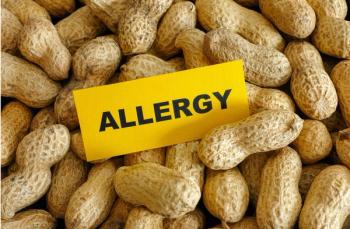
The Journal of Respiratory Diseases
- The Journal of Respiratory Diseases Vol 29 No 11
- Volume 29
- Issue 11
Comparing PO and IV steroids in the treatment of COPD exacerbations ANDMore findings on the pros and cons of bronchial thermoplasty for asthma
de Jong YP, Uil SM, Grotjohan HP, et al, Isala Klinieken, Zwolle, and University Medical Center Gronigen, the Netherlands. Oral or IV prednisolone in the treatment of COPD exacerbations. A randomized, controlled, double- blind study. Chest. Dec 2007;132:1741-1747.
Comparing PO and IV steroids in the treatment of COPD exacerbations
de Jong YP, Uil SM, Grotjohan HP, et al, Isala Klinieken, Zwolle, and University Medical Center Gronigen, the Netherlands. Oral or IV prednisolone in the treatment of COPD exacerbations. A randomized, controlled, double- blind study. Chest. Dec 2007;132:1741-1747.
Patients who are hospitalized for exacerbations of chronic obstructive pulmonary disease (COPD) are usually given corticosteroids by the intravenous route. However, a study conducted in the Netherlands found that oral corticosteroids are just as effective as intravenous therapy in this setting.
In this study, 210 patients wererandomly assigned to treatment with oral or intravenous prednisolone (60 mg) for 5 days, followed by a gradual tapering of oral prednisolone for a total 11-day course. All patients also received nebulized ipratropium and albuterol, 4 times a day, and oral amoxicillin/clavulanate. The primary outcome measure was treatment failure, which was defined as death, ICU admission, rehospitalization for COPD, or intensification of therapy during 90 days of follow-up.
In the first week, both treatment groups experienced improvement in pulmonary function (as assessed by spirometry) and health-related quality of life, with no significant difference between the groups. The 2 groups did not differ with respectto treatment failure (intravenous therapy, 61.7%; oral therapy, 56.3%) or mean length of hospital stay (11.9 and 11.2 days, respectively).
The authors acknowledge that the overall treatment failure rate in their study was higher than that previously reported (59% vs 37%). This may be because their study used a lower dosage of corticosteroid. Another possible explanation is that the prescription of antibiotics or corticosteroids by general practitioners in the outpatient setting was scored as a treatment failure.
The authors conclude that because oral corticosteroids are more convenient to use and are less expensive, the oral route is preferable for most patients hospitalized with an exacerbation of COPD.
More findings on the pros and cons of bronchial thermoplasty for asthma
Pavord ID, Cox G, Thomson NC, et al, University Hospitals of Leicester, UK, and other centers. Safety and efficacy of bronchial thermoplasty in symptomatic, severe asthma. Am J Respir Crit Care Med. Dec 15, 2007; 176:1185-1191.
Bronchial thermoplasty is a procedure designed to improve asthma control by reducing airway smooth muscle. The results of preliminary studies have been encouraging, and now Pavord and associates report that bronchial thermoplasty may be able to achieve long-term improvement in asthma control. However, the downside of this procedure is that it is associated with a short-term worsening of asthma symptoms.
Their study included 32 adults who had severe, persistent asthma that was not adequately controlledby inhaled corticosteroids, long-acting β2-agonists, and other asthma therapies. The participants were randomly assigned to undergo bronchial thermoplasty (15 patients) or to a control group (17 patients). Treatment was followed by a 16-week phase in which corticosteroid therapy was held stable, a 14-week weaning phase, and a 16- week reduced-corticosteroid phase.
Bronchial thermoplasty caused a transient worsening of asthma symptoms. Four of 15 patients who underwent this procedure were hospitalized for respiratory symptoms during the treatment period; most of the hospitalizations occurred within 3 days of treatment. Two of the patients had segmental lobar collapse. There were no hospitalizations in the control group.
At 22 weeks, the patients who underwent bronchial thermoplasty had significantly more improvementin use of rescue medications, prebronchodilator forced expiratory volume in 1 second, and Asthma Control Questionnaire scores than the control group. At 52 weeks, the differences in rescue medication use and the asthma control scores were still significant.
Articles in this issue
about 17 years ago
The technique of adult flexible bronchoscopy: Part 1about 17 years ago
Primary synovial sarcoma presenting as an endobronchial massabout 17 years ago
Pulmonary hypertension in the elderly, part 1: Evaluationabout 17 years ago
A covert cause of hypoxemia: Intravascular pulmonary lymphomaabout 17 years ago
Invasive pulmonary aspergillosis, part 2: Treatmentabout 17 years ago
A case of progressive shortness of breath in a patient with emphysemaabout 17 years ago
Pneumomediastinum as a complication of diabetic ketoacidosisabout 17 years ago
Identifying the predictors of asthma-related deathNewsletter
Enhance your clinical practice with the Patient Care newsletter, offering the latest evidence-based guidelines, diagnostic insights, and treatment strategies for primary care physicians.















































































































































































































































































